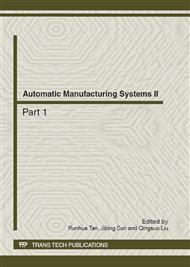p.1330
p.1334
p.1339
p.1343
p.1347
p.1353
p.1357
p.1362
p.1366
Using a Multilayer Perceptrons Neural Network and Genetic Algorithm to Predict the NTD/USD Exchange Rate
Abstract:
In recent years, the global community has experienced economic difficulties, such as the 2008 financial crisis and the ongoing European debt crisis. Consequently, currency values have fluctuated significantly over short periods of time, which increases the difficulty of survival and fear of businesses that rely on import and export trade. Failure to properly and appropriately address the operational risks of exchange rate fluctuations can reduce corporate profit and even lead to operational losses. However, financial markets provide numerous methods for corporations to hedge the risks of exchange rate fluctuations. Nevertheless, a model for predicting exchange rate fluctuations can enable business owners to make more appropriate judgments. This study employs a multilayer perceptions (MLP) neural network with genetic algorithm (GA) to predict the New Taiwan dollar (NTD)/U.S. dollar (USD) exchange rate. The GA is used to determine the optimum number of input and hidden nodes for a feedforward neural network, the optimum slope of the activation function, and the optimum learning rates and momentum coefficients. The empirical results show that the ability of the proposed model to predict the NTD/USD exchange rate is excellent. The absolute relative error between the predicted value and the actual value was 0.2948%, and the correlation coefficient was 0.994802.
Info:
Periodical:
Pages:
1347-1352
Citation:
Online since:
June 2012
Authors:
Keywords:
Price:
Сopyright:
© 2012 Trans Tech Publications Ltd. All Rights Reserved
Share:
Citation:


